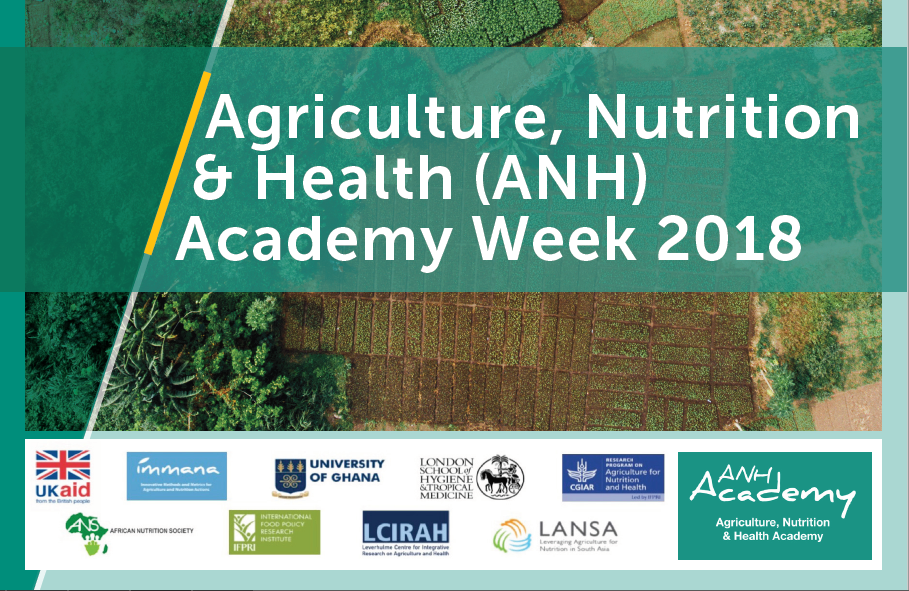
Four sub-sessions
Chair: Erin Lentz, University of Texas Austin
Speakers and presentations
Rebecca Pradeilles, University of Sheffield
Catch-up Growth during Infancy in Rural Pakistan: A Longitudinal Analysis of the Women’s Work and Nutrition Study
Recording
Agnes Quisumbing, International Food Policy Research Institute (IFPRI)
What Dimensions of Women’s Empowerment Matter for Nutritional Outcomes? Evidence from Six Countries in Africa and Asia
Slides/Recording
Amy Webb Girard, Emory University
Women's Empowerment: Pathways toward Child Nutrition Outcomes
Slides/Recording
Jean-Marie Zongo, Tanager
Linkages between Local Poultry Trade, Gender Norms and Dietary Diversity in Rural Settings of Burkina Faso
Recording
Catch-up Growth during Infancy in Rural Pakistan: A Longitudinal Analysis of the Women’s Work and Nutrition Study
Rebecca Pradeilles, University of Sheffield
Introduction
Fetal growth impairment is common in low- and middle-income countries (LMICs), contributing to high rates of stunting in children under five years of age. In our previous study, we found that intensive agriculture during pregnancy was negatively associated with infant length-for-age z-scores (LAZ) in early infancy, suggesting fetal growth was compromised. The adverse outcomes of early infant stunting can be improved by early catch-up growth, but little is known about the factors associated with catch-up growth in LMICs. This study aimed to estimate the prevalence of, and factors associated with, catch-up growth among infants in rural agricultural communities in Pakistan.
Methods
A longitudinal study of mother-infant dyads (n=1161) was conducted in rural Sindh province from December 2015 to February 2016 (infants aged 0.5-3 months), with follow-up (n=1029) from November 2016 to January 2017 (infants aged 9-15 months). Interviewer-administered questionnaires and infant anthropometric measurements (weight and height/length) were collected. The outcome was catch-up growth in length (defined as a change in conditional LAZ > 0.67) between baseline and endline (approx. 11 months). Exposure variables included cotton harvesting performed in the past season (we hypothesized that heavy agricultural workloads might compromise catch-up growth because mothers will have less time to devote to infant care); individual (maternal age and height, infant sex) and household-level factors (maternal/paternal education, household wealth index, household food insecurity, number of adult females per household, number of children under 5 years of age); nutrition-related factors (Infant and Young Child Minimum Dietary Diversity score, maternal nutrition knowledge, breastfeeding status); and health-related factors (child health and maternal depression). Associations were examined using multivariable logistic regression analyses. Hypothesized pathways from the exposure variables to catch-up growth were derived from the available literature and drawn as directed acyclic graphs to inform the model building process.
Findings and Interpretations
The prevalence of stunting was 45.3 percent at baseline (mean age = 1.6 months) and 60.7 percent at follow-up (mean age =12.1 months). Twenty-nine-point-six percent of infants exhibited catch-up growth. Factors associated with the presence of catch-up growth were a taller mother (OR=1.08 [1.05; 1.11]), a wealthier household (OR=3.61[1.90; 6.84] for infants living in the wealthiest households compared to those living in the poorest ones), an educated mother (OR=2.43 [1.30; 4.56] for mothers who achieved middle, secondary or higher education vs. none) or father (OR=1.46 [1.05; 2.03]), and whether the household included two adult females (vs. one) (OR=1.91 [1.26; 2.88]). Factors associated with a reduction in catch-up growth were whether t`he household had two or more preschool children (vs. one) (OR=0.64 [0.45; 0.89] for two children vs. one and OR=0.44 [0.29; 0.66] for three or more children vs. one) and whether the child was currently breastfed (OR=0.59 [0.41; 0.88]). Infants of women working in cotton-harvesting in the past season were less likely to display catch-up growth (OR=0.60 [0.39; 0.90] for mothers who worked more than 2 months vs. none), however this association attenuated to the null on adjustment.
Conclusions
This study generated new evidence with regards to catch-up growth and its associations in infants living in rural Pakistan. Our analysis showed that a substantial proportion of infants experienced catch-up growth despite living in a challenging environment associated with extremely high rates of stunting. The modifiable environmental factors associated with catch-up growth, in this rural Pakistan environment, emphasise the need to develop and/or strengthen existing nutrition-sensitive programmes (e.g. programmes targeting maternal and paternal education, socio-economic status and agriculture income generation) to improve infant linear growth. Tackling wider and proximal determinants of catch-up linear growth will help achieve the internationally-agreed targets for reducing childhood stunting (< 5 years of age) by 2030, as part of the Sustainable Development Goals.
What Dimensions of Women’s Empowerment Matter for Nutritional Outcomes? Evidence from Six Countries in Africa and Asia
Agnes Quisumbing, IFPRI
Introduction
Although linkages between increasing resources controlled by women and nutrition are well established, the linkages between women’s empowerment and nutrition have been more difficult to quantify, owing to the difficulty of measuring empowerment. Directions of impact between empowerment and nutrition outcomes may be ambiguous, may involve tradeoffs between different objectives, and may differ across cultural contexts. This paper conducts new empirical analysis using the Women’s Empowerment in Agriculture Index (WEAI), based on large-scale surveys in six countries in Africa and Asia, to identify which dimensions and indicators of women’s empowerment matter for different diet and nutrition outcomes.
Methods
We use data collected on the WEAI from Feed the Future population-based surveys from Bangladesh, Nepal, Cambodia, Ghana, Mozambique, and Tanzania. To analyze the relationship between nutritional outcomes and women’s empowerment, we estimate the following equation using ordinary least squares:
Nh = a0 + a1 empowerment + a2I + a3H + ε
where Nh is a vector of nutritional outcomes at the household, woman, or child level; empowerment is a measure of empowerment derived from the WEAI; I is a vector of individual characteristics; H is a vector of household characteristics; a1, a2, and a3 are the parameters to be estimated; and ε is an error term. The key coefficient of interest is a1, which captures how the primary female’s empowerment is correlated with the nutritional outcome of the household, primary female member, or child, having controlled for a conventional set of observable household characteristics. The child regressions control for child’s age and sex and the mother’s age, height, and literacy, in addition to household characteristics. Household-level outcomes include the household hunger score, household dietary diversity, and household calorie availability. Women’s outcomes include dietary diversity and BMI, while child outcomes include indicators of infant and young child feeding (IYCF) practices, dietary diversity, and anthropometric measures.
Findings and Interpretations
Associations between dimensions of women’s empowerment in agriculture and food security and nutrition outcomes are not consistent across countries. Some indicators contributing to empowerment have positive effects on food and nutrition security, while others have negative associations, indicating that the context matters greatly for shaping gender-sensitive nutrition interventions in agriculture.
Higher women’s empowerment scores (according to the five domains of empowerment [5DE]) are almost always associated with positive nutritional outcomes, except for Bangladesh, which has mixed results. Across countries, higher women’s empowerment tends to improve children’s nutritional outcomes, suggesting nutritional programs that also aim to empower women overall could have greater impacts on nutritional outcomes than those that do not.
Greater household equality (a smaller gap between men’s and women’s empowerment scores) is almost always associated with better nutritional outcomes. Cultural preference for boys over girls is evident in Bangladesh, Nepal, and Ghana; increased women’s empowerment often worsens girls’ anthropometric outcomes relative to boys.
Improved nutrition is not necessarily correlated with being empowered across all empowerment domains, indicating the possibility of tradeoffs. In Nepal, control over incomes improves women’s BMI, but if intensifying participation in agriculture increases workload, then both maternal and child nutrition could be at risk.
Conclusions
The WEAI can be used to identify policy and programming priorities by disaggregating the contribution of each indicator to women’s disempowerment. Previous analyses identified the top two or three contributors to disempowerment and recommended that programs be designed to support empowerment in these specific areas. However, comparing the results from analyzing the top two contributors to disempowerment versus all 10 component indicators, we find that analyzing the top two indicators may be misleading because different empowerment indicators matter for different nutritional outcomes, with country-specific results. The model with all 10 indicators provides a much fuller picture of which indicators affect nutritional outcomes in specific contexts. Our findings suggest prime areas for policy and programming whenever overlap exists between a top contributor to disempowerment and a strong association between an indicator and positive nutritional outcomes. Interventions targeting top contributors to disempowerment that could potentially improve a range of nutritional outcomes could also be very cost-effective. However, because our results are based on associations, gender- and nutrition-sensitive agricultural programs that address the top contributors to women’s disempowerment would need to be rigorously evaluated both in terms of impact and cost-effectiveness to guide future programming.
Women's Empowerment: Pathways toward Child Nutrition Outcomes
Amy Webb Girard, Emory University
Introduction
Empowering women improves child health. We examined the pathways by which domains of women's empowerment (WE) influence child nutritional status (CNS).
Methods
We conducted a secondary analysis of data from the most recent Demographic and Health Surveys (DHS) (2011-2016) for married women with children aged 6-24 months in Ethiopia, Kenya, Rwanda, Tanzania, and Uganda (n=13,780). We operationalized CNS using anemia, height-for-age-z score (HAZ), and weight-for-age-z score (WHZ). WE was evaluated using three previously identified latent factors for 1) women's human/social assets (HSA); 2) intrinsic agency (beliefs and attitudes towards domestic violence (BA)), and 3) instrumental agency (Decision-making (DEC)). We used structural equation models with latent constructs to estimate the strength of a priori hypothesized pathways from WE to CNS through the mediators, maternal body mass index (BMI) and child's dietary diversity score (CDDS). Due to our second a priori hypothesis of socioeconomic status (SES) being a mediator of the hypothesized model of WE to CNS, we used the DHS household wealth index as a measure of SES to evaluate these path models stratified by household wealth tertiles. Models were run for individual countries as well as for a pooled full sample. Our interpretations of the adequacy of model fit are based on theoretical interpretation and four measures of goodness-of-fit.
Findings and Interpretations
WE domains were directly and positively associated with maternal BMI [(estimate,SE) (HSA: 0.17,0.03) (BA: 0.23,0.03) (DEC: 0.03,0.01)] and CDDS [(HSA: 0.16,0.03) (BA: 0.17,0.08)]. Maternal BMI was directly and positively associated with child HAZ (0.08,0.04) and child WHZ (0.35,0.03). CDDS was directly and positively associated with child WHZ (0.11,0.06). No direct effects from WE domains were associated with CNS outcomes. Women's HSA was indirectly associated with child WHZ through BA and DEC through maternal BMI. DEC was the only predictor associated with anemia (0.08,0.04). All estimates were significant at p<0.01.
In stratified analyses, the estimates of direct and indirect effects between WE and CNS differed. In the lowest wealth tertile, HSA was directly and positively associated with anemia (0.05,0.02). BA was the only WE domain associated with maternal BMI (0.11 0.04). Both mediators were associated with WHZ [(BMI: 0.27,0.03) (CDDS: 0.13,0.08)]. In the highest wealth tertile, WE domains were directly and positively associated with maternal BMI [(HSA: 0.42,0.03) (BA: 0.22,0.08)] and CDDS (BA: 0.15,0.08). Maternal BMI was directly and positively associated with child HAZ (0.13,0.08) and WHZ (0.31,0.04). There were no significant predicators associated with anemia. Women's HAS was indirectly associated with child WHZ through BA through maternal BMI. Findings further differ by individual country.
Conclusions
This study incorporates a multi-disciplinary approach to evaluate child nutritional status through the use of Kabeer's framework from sociology and the use of psychometric tools for quantitative analysis. Although WE was not directly associated with CNS, the indirect associations suggest that improving WE in East Africa would improve CNS through increased maternal BMI. Our results helped delineate the importance of improved gender equality and the implications for household nutrition. However, a minimum household wealth threshold may be needed to translate empowerment benefits into CNS outcomes.
Linkages between Local Poultry Trade, Gender Norms and Dietary Diversity in Rural Settings of Burkina Faso
Jean-Marie Zongo, Tanager
Introduction
According to a 2015 Food and Agriculture Organization of the United Nations (FAO) policy brief, four pathways (stability of food supply and prices, diversity of supply, lower food prices, and increased income) are central to how trade can improve nutrition and food security. Our study focuses on how trade and market support food diversification opportunities in rural Burkina Faso and thus improve the nutritional status of women and children. We would argue that in addition to trade and market opportunities within local poultry production, socio-cultural drivers, such as gender norms, are significant in shaping food environments and consumer behavior to achieve nutritional outcomes.
Methods
The purpose of the study was to show how the pathways of food availability, accessibility, and consumption affect diets and nutritional outcomes for women and children in Burkina Faso’s poultry producing communities. To understand this, we measured and analyzed food purchase (market access, cost of foods in market, and household decisions on what to buy), intra-household distribution of food, and food consumption (using women’s food consumption as a proxy for the household). One hundred twenty households and 10 local markets in 30 villages covering two regions of Burkina Faso (Centre Ouest and Boucle du Mouhoun) were selected for data collection. The choice of villages was conducted using probabilistic sampling. In each village, four households with a mother of a child age 6-23 months were targeted. The study included a mix of households (polygamous versus monogamous) and for polygamous households, a range of women holding different positions in that household.
The methodological approach is based on mixed methods combining quantitative (market analysis, 24-hour food group recall, and food consumption frequency) and qualitative (semi-structured interviews, 24-hour direct observation) tools. The study also collected food price data from 10 local markets.
Findings and Interpretations
Households in the study area depend on diets of a staple food (maize, millet) and leaf sauce. Generally, households have one or two meals per day.
Households depend on cereal stocks that last two to six months depending on the region.
Women do not always have the power to decide and initiate positive changes for household diet diversity. Men generally make available only the cereals that women have helped to produce; the provision of condiments and foods rich in animal protein is not their concern.
Most of the 10 food groups are available in the markets. For a six person-household, a diversified daytime meal costs $2.63 and $2.86 in the respective regions.
Food accessibility is determined by some stable agricultural trade activities that generate regular incomes, which is potentially poultry production. Market analysis has identified an end-market demand that can absorb significant increases in supply and, in turn, reward productivity investments by poultry producer households. Therefore, households that intensify production can benefit from a significant income flow for increased diet diversity.
However, female decision-making determines mainly how this trade opportunity and food availability in the market could influence diet diversity and the nutritional status for women and children.
Conclusions
The impact of local markets and value chains such as local poultry affects the ability of households to achieve food diversification in rural settings of Burkina Faso. With income and food purchase opportunities, poultry producer households can access a stable diet diversity in the rural settings of Burkina Faso. However, the findings suggest there are larger factors at play beyond trade, cost of food, or access to food that are driving households’ decisions about food diversification. Our study found that gender roles have a significant impact on who has the power and ability to make decisions around food purchases and decisions. Regardless of what is available and accessible in the market to achieve a nutritious diet, women do not have the power to decide how income can be used, thus limiting their ability to make purchase decisions that increase household dietary diversity. Yet empowering women through their participation in the production and sale of poultry, increasing their access to knowledge on poultry diversification and production, and facilitating greater control over their income and an increase of their decision-making capacity is essential to achieving household dietary diversity and nutrition outcomes for women and children aged 6 to 23 months.





